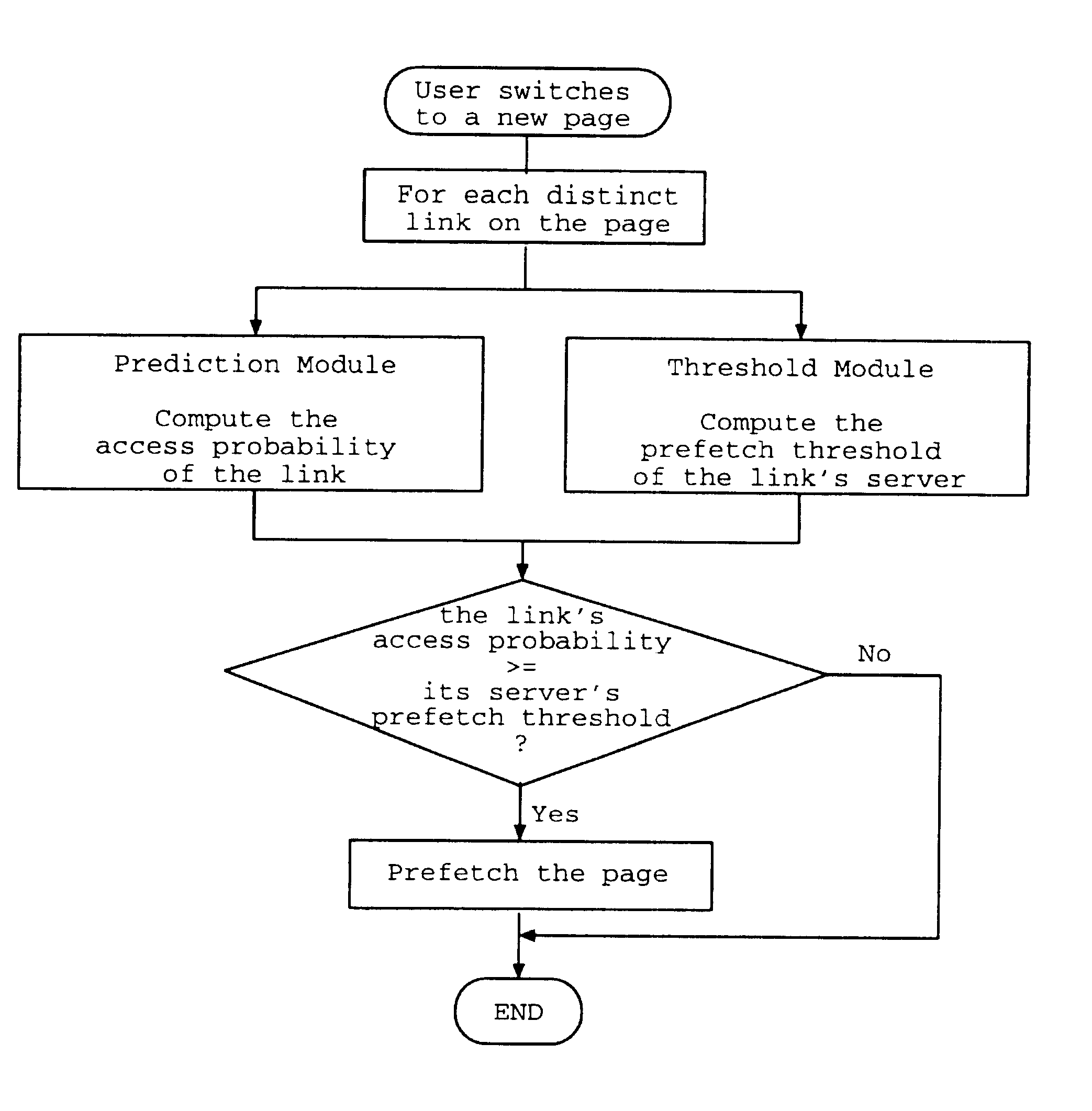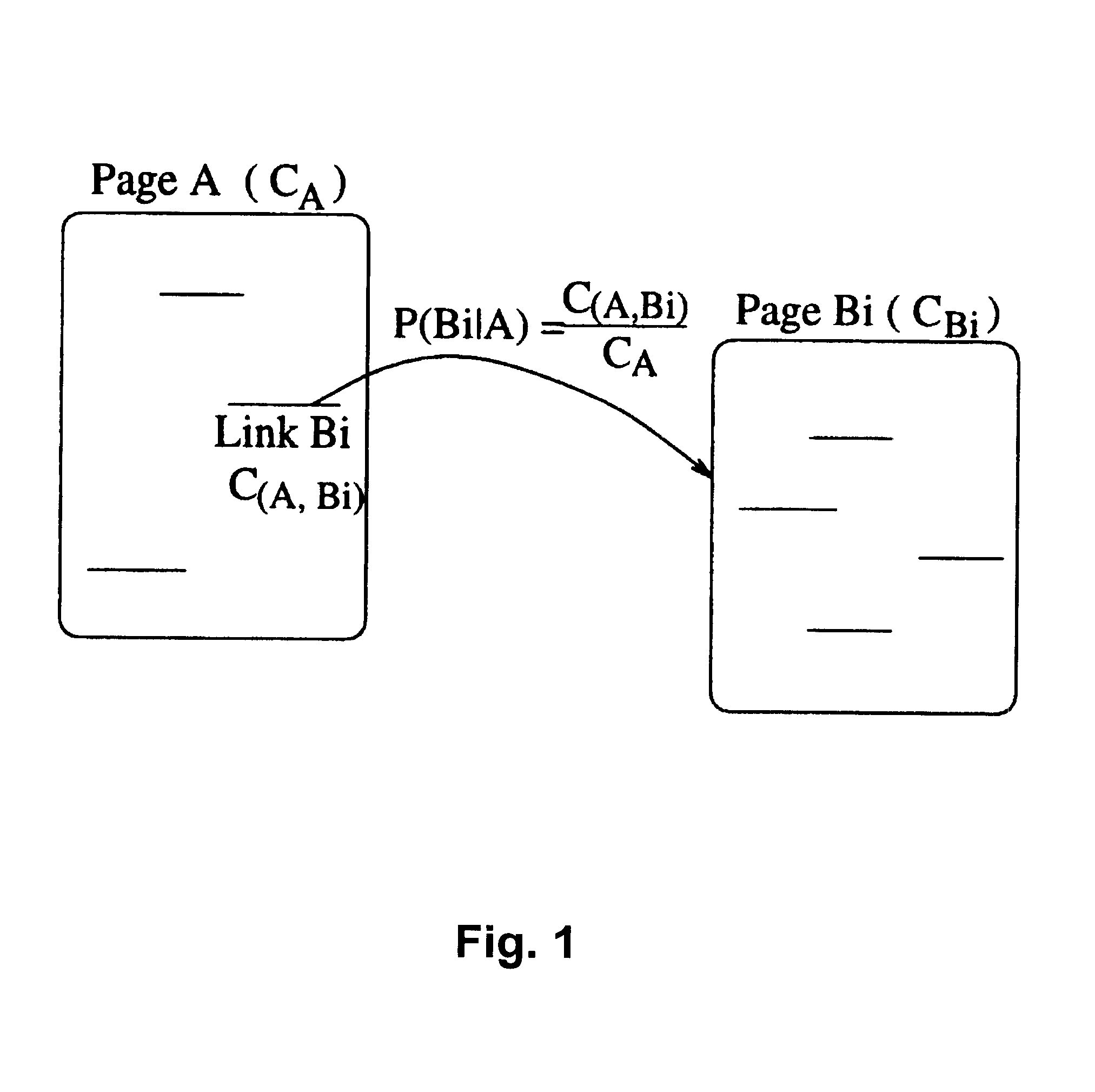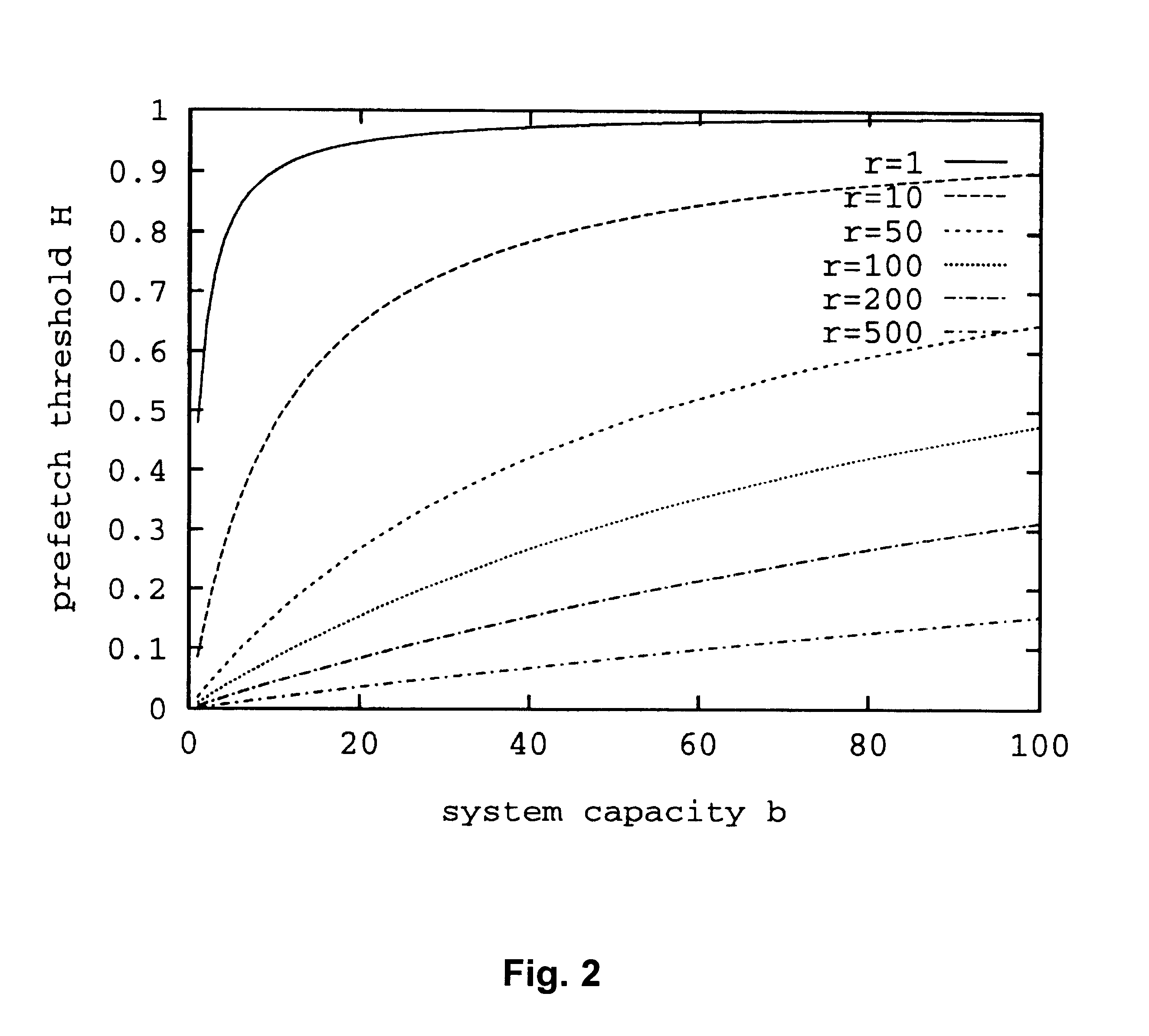However, the growth of Internet capacity is not keeping pace so that users often experience long delays in retrieving files from remote machines when running network related applications.
On the other hand, during the time interval between two network accesses users will be viewing the information just downloaded and the local computer is generally idle.
The idea of prefetching stems from the fact that, after retrieving a page from the remote
server, a user usually spends some time viewing the page, and during this period the local computer as well as
network link is generally idle.
However, the problem is, since the prediction can not be perfect, some of the prefetched files are never used and prefetching increases the
system load.
At some point, this increase in load may increase the
delay of normal (nonprefetching) requests significantly and may eventually cause the overall
system performance to degrade.
Therefore, the key challenge in prefetching is to determine what to prefetch so that improvement in performance will occur.
Unfortunately, in reality, some prefetched information may never be used resulting in wasted bandwidth and increased
delay to normal (nonprefetch) requests.
If everyone were to employ this method, there would be unacceptable surges in network traffic.
In fact, prefetching without caution could be disastrous to the network.
This means not only the percentage of the pushed files being used, but also, and more importantly, the
impact of pushing on other users who are sharing the same network but may or may not be able to use these pushed files at all.
This will almost certainly not achieve the best efficiency for the overall
system.
Since the content of each page varies greatly and how pages are browsed differs from user to user, it is difficult or impossible to adjust the size of the time window.
Therefore, the request window includes both
html files and embedded images, which also makes it difficult to determine size of the request window.
The only difficulty at the server is that it is not straightforward to find out from which page a request was initiated.
The
delay cost indicates how much the user suffers waiting for files.
The system resource cost includes the cost of
processing the packets at the end nodes and that of transmitting them from the source to the destination.
The problem with these approaches is that they do not consider factors like system load and capacity, which can greatly affect the performance of prefetching.
These assumptions imply that the first request to a prefetched file will always result in a hit.
In a single user system, the total cost c of requesting a file is the sum of the system resource cost and the delay cost of waiting for the file to arrive..sup.2 Therefore, if the user requests a file that is not available in the local computer, the total cost of retrieving the file is
that is, the more expensive time is relative to the system resources, the lower the prefetch threshold is for fixed bandwidth.
In a multi-user system where system resources are shared among users, prefetching increases the delay of other users' normal (e.g., nonprefetch) requests.
As more files are prefetched, the cost of normal requests increases because prefetching increases the system load, hence the delay of retrieving files increases.
The reason for this is that, in those cases, when the load is low, prefetching does not save much time.
As the load continues to increase, prefetching files will add relatively long delay to the normal user requests, so the threshold needs to be increased again.
However, only in the multi-user system is the prefetch threshold affected by system load.
In addition, after some users have started prefetching files, others can't use (15) to determine the prefetch thresholds.
This is because the distribution of access probabilities in the system is very complex, and a user may be unable to find the user request rate .
lambda., from the current .
lambda..sub.1 and .
lambda..sub.2.
More files were prefetched for the other two cases, but still the average number of files prefetched for each user request is low.
The value obtained in this way is not very accurate and may vary with time.
 Login to View More
Login to View More  Login to View More
Login to View More 


